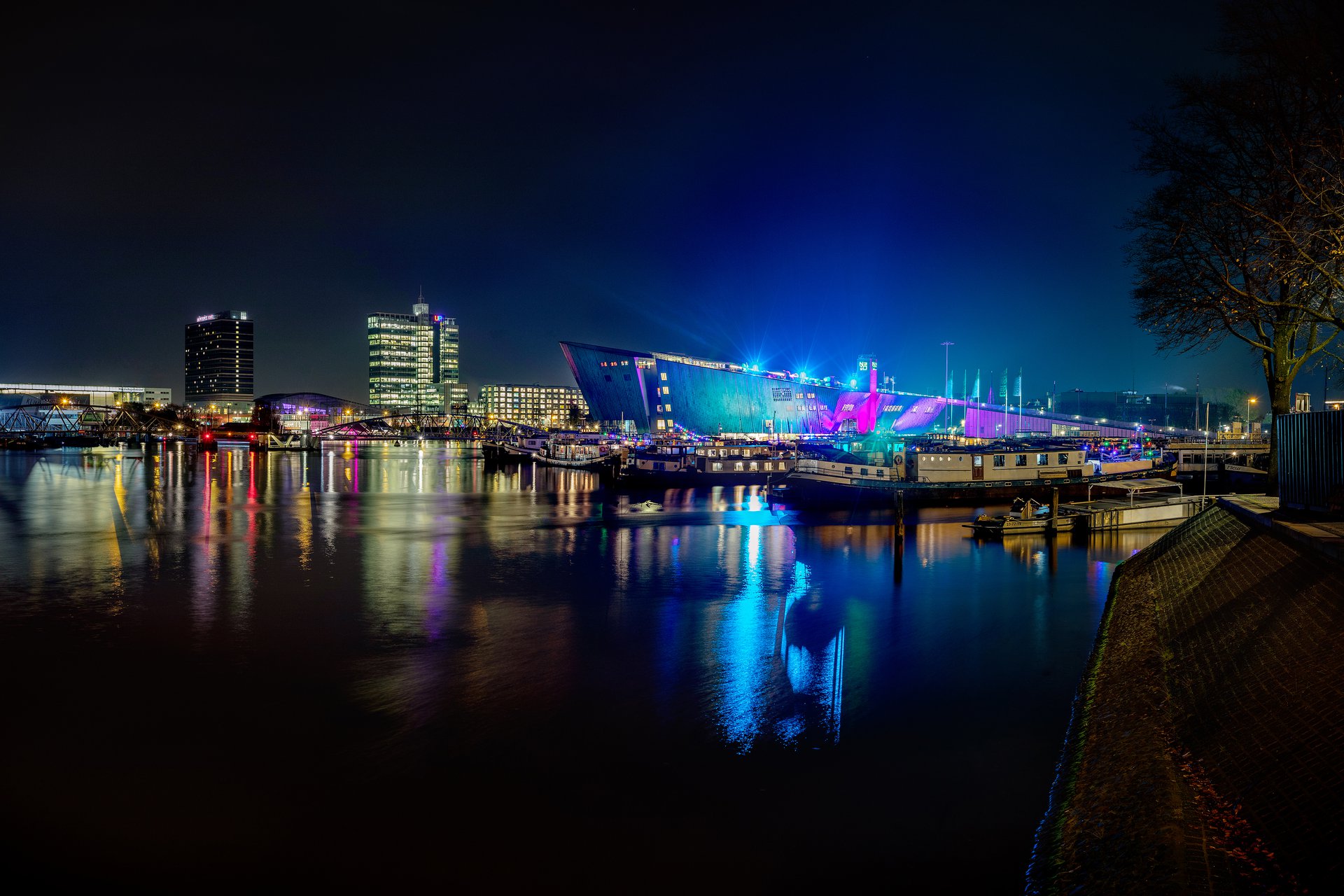
Activities
Science Spectacle
On Friday 8 December, come to Marineterrein next to the iconic NEMO Science Museum building in Amsterdam for a show on and around the water that will surely make a splash! Three stunning scientific experiments will be performed live at this location.
Unique event in the open air
NEMO Science Museum’s 100th birthday will be celebrated in many different ways, but this is definitely the most extraordinary: a unique outdoor spectacle on Friday 8 December. NEMO will be performing three famous — and spectacular! — experiments live in the open air.
Three surprising feats
On the water between NEMO and the Marineterrein, a real boat will be lifted up using an ordinary vacuum cleaner. A gigantic wheel will go up into the air. And a real rocket will be launched. Science journalist Anna Gimbrère and scientist Noor Abdulhussain will be presenting this extraordinary show.
Everyone can watch free of charge
The NEMO Science Spectacle is free of charge and can be watched from the quay at the Marineterrein in Amsterdam. There’s no need to register for the event, but of course it could get busy. So make sure to be on time. See you there!
Date and time: Friday 8 December at 18.30
Duration: 30 minutes
Location for visitors: Marineterreinkade, accessible from 17.45
Entrance: free of charge
Why? To celebrate curiosity!
NEMO has incited visitors’ curiosity for 100 years. The scientific principles that will be demonstrated on 8 December are the conservation of momentum, vacuum and air pressure. Principles that are all around us in various ways in our daily lives and that were discovered by asking questions, through experimentation and by making mistakes that help us learn more.
The wheel that wants to keep spinning in the same direction
The experiment with the giant wheel is based on the law of the conservation of momentum. This principle states that if a wheel with a certain mass revolves around its own axis, it will want to continue spinning in the same direction and will not fall over. This principle was already applied in the gyroscope invented by Léon Foucault in 1851.
The sphere that sixteen horses cannot pull apart
Otto van Guericke, mayor of Magdeburg, was already studying the phenomenon of vacuum back in 1654. Using his self-made vacuum pump, he pumped the air out of two copper hemispheres. Due to the vacuum seal, the two halves were pushed together to make a sphere that could not be pulled apart even by sixteen horses. This principle will be demonstrated using a four-metre-long boat… and a simple vacuum cleaner.
The rocket that outsmarts gravity
To demonstrate the principle of thrust, a large rocket measuring two metres will be used. In order to shoot a rocket into space, a force is needed that is stronger than gravity. Although the first-ever fireworks were shot up into the air one thousand years ago, it took until 1915 for the first rocket with the potential of reaching space to be invented by US citizen Robert Goddard. He improved the emission of gases and air to create more thrust than ever before.